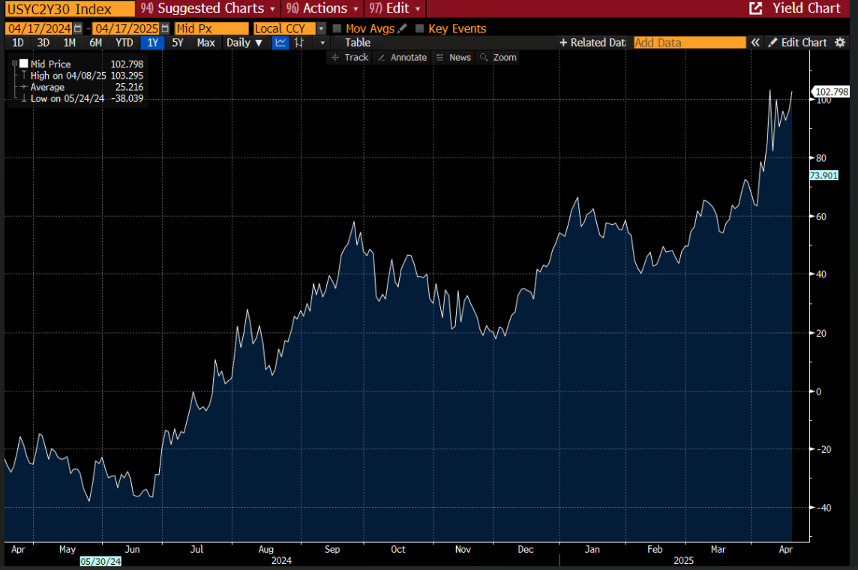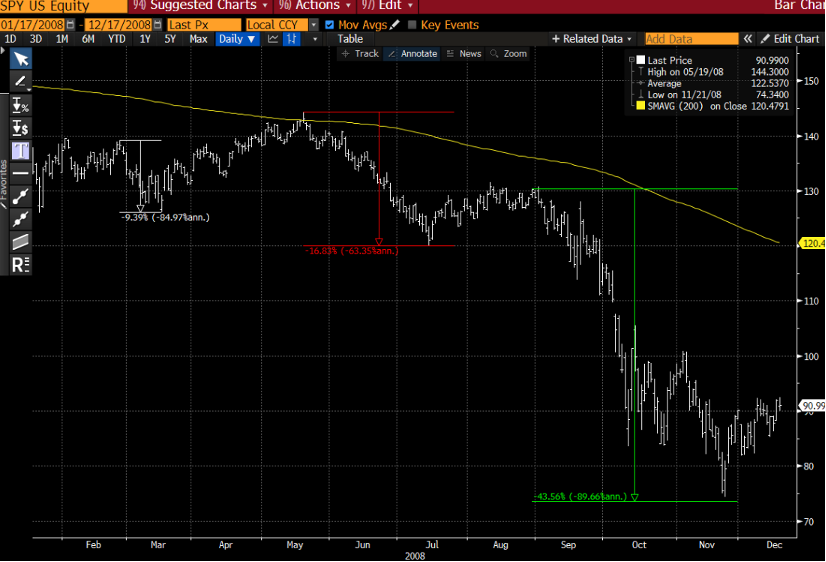Substack Library
GlossaryCreaking Girders
April 18, 2025The government is asserting a right to stash away residents of this country
in foreign prisons without the semblance of due process that is the foundation of our constitutional order.
— United States Court of Appeals for the Fourth Circuit
THIS IS NOT INVESTMENT ADVICE. INVESTING IS RISKY AND OFTEN PAINFUL. DO YOUR OWN RESEARCH.
The girders of the US financial system are beginning to creak. The situation is evolving quickly. Below is what I noticed this week.
-
To anticipate policy, it’s important to accurately identify the psychological profile of a political leader or CEO. Narcissists tend toward grandiosity, poor empathy, a constant need for admiration, and extreme sensitivity to criticism. These traits often intensify with success, leading to increasingly reckless behavior — like an alcoholic with drink.
-
The US Treasury market is not trading well. This is unprecedented in my investment lifetime. In past crises, when there was a whiff of weak economic growth or a falling stock market, bond yields fell (meaning bond prices rose). Not this time. The best metric for this is the gap in yields between long-term (30-year) bonds and short-term (2-year) bonds. This is what’s known as the “yield curve” and is an objective measure of expectations about future inflation and creditworthiness. The gap between long-term and short-term yields has been rising, as I show below. This means the cost of borrowing is rising rapidly, which implies future spending will fall. It’s the type of pricing you see when investors pull out of an emerging market — like Brazil — when domestic and foreign investors lose confidence in markets.
-
Foreigners believe the rule of law is breaking down in the US, which may explain the yield curve. For instance, this week, the European Central Bank cut interest rates. Afterwards, there was a press conference. A reporter asked ECB chief Lagarde about the implications of “the rule of law vanishing in the US.” We know this administration has arrested a person who has not committed a crime and sent them to a foreign prison (thus the quote up top), then been ordered by the US Supreme Court to reverse this decision — and disregarded it. The Administration has also attempted to muzzle US universities and strip the Fed of its independence (“Powell will leave if I ask him to”). Europe’s financial watchdog this week questioned the safe-haven status of US Treasurys.
-
Treasurys and banks. US banks hold US Treasuries as their “risk-free” asset. For every $1 you give a bank, they lend out about 90 cents and keep 10 cents in Treasuries. What if Treasuries do indeed stop trading as a risk-free asset? Then what is now a tariff-induced slowdown can become a credit crisis as the value of the bank’s risk-free assets decline. Anyone who is leveraged to Treasurys could be hurt.
-
Stocks. Despite the above, stock markets are off their lows. Many I know are still thinking “buy the dip.” Stock prices are discounted using the Treasury yield, meaning the higher the yield, the lower the stock price should be. To me, the tremors now are similar to 2008. And in 2008, stocks did nothing for long periods of time. Stocks rallied after Bear Stearns imploded in March, falling sharply (40%+) only in the second half of the year, as I show below.
-
Dollar down. Initially, the dollar’s decline happened overnight, when foreigners were repatriating profits or adjusting asset weights. This week, the dollar began to fall both overnight and during US trading hours. If investors are fleeing US assets, there is a first-mover advantage.
-
Hit to the labor market. There is no comprehensive data on how many people are leaving the US because their immigration status is being revoked. But my back-of-the-envelope calculation suggests hundreds of thousands. The labor participation rate of these people is high, meaning their departure is a meaningful hit to the economy. Suffice it to say, the employment numbers are going to look terrible.
There are many ways this can play out, but the risk of a disorderly, simultaneous fall in the dollar, long-term Treasurys, and US stocks is the highest it has been in my career. Does the key policymaker see the risk? Threatening to destroy central bank independence when investors are already dumping US Treasurys is putting ever more pressure on a fragile structure. Like I said, the girders are creaking.


